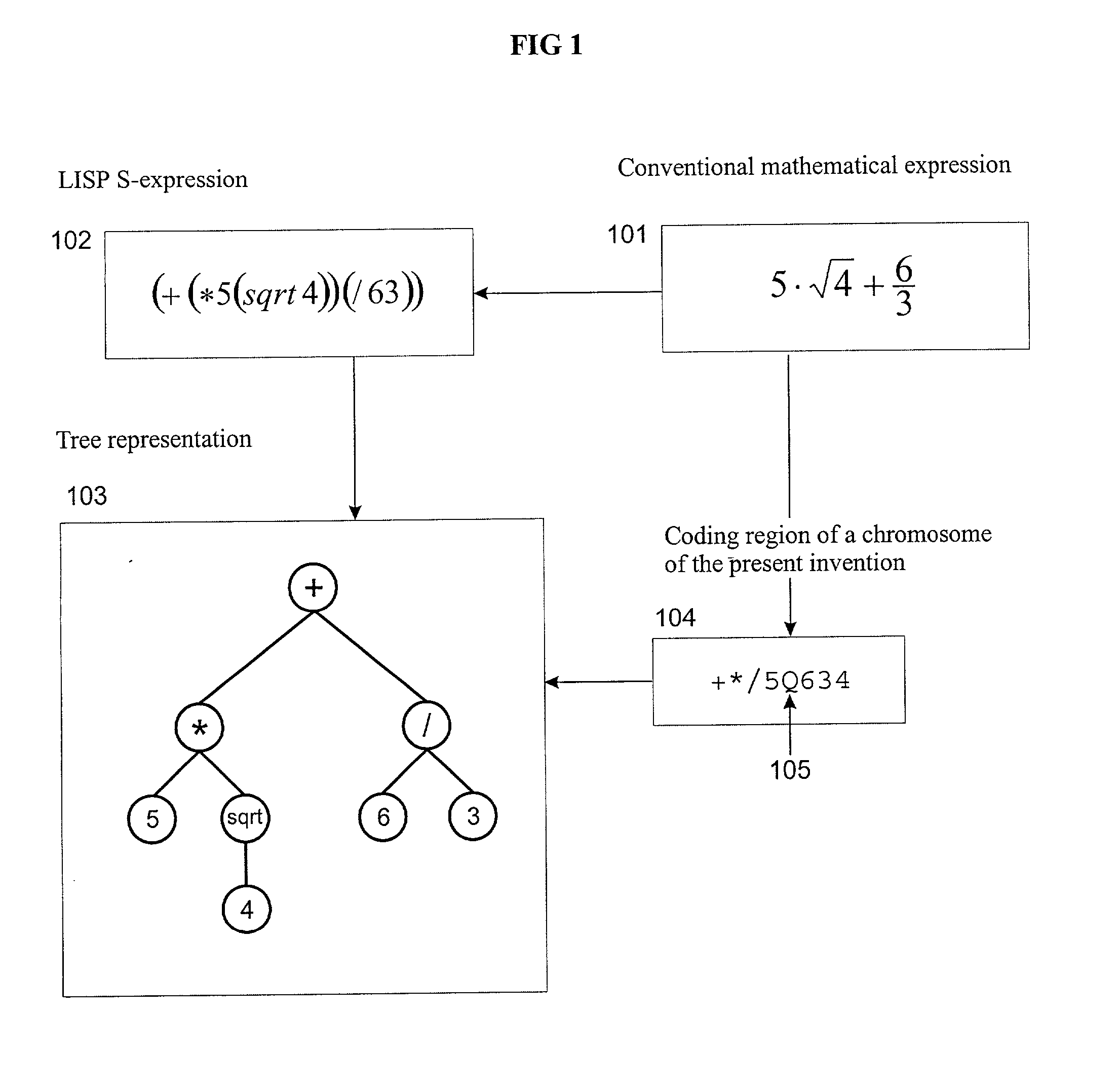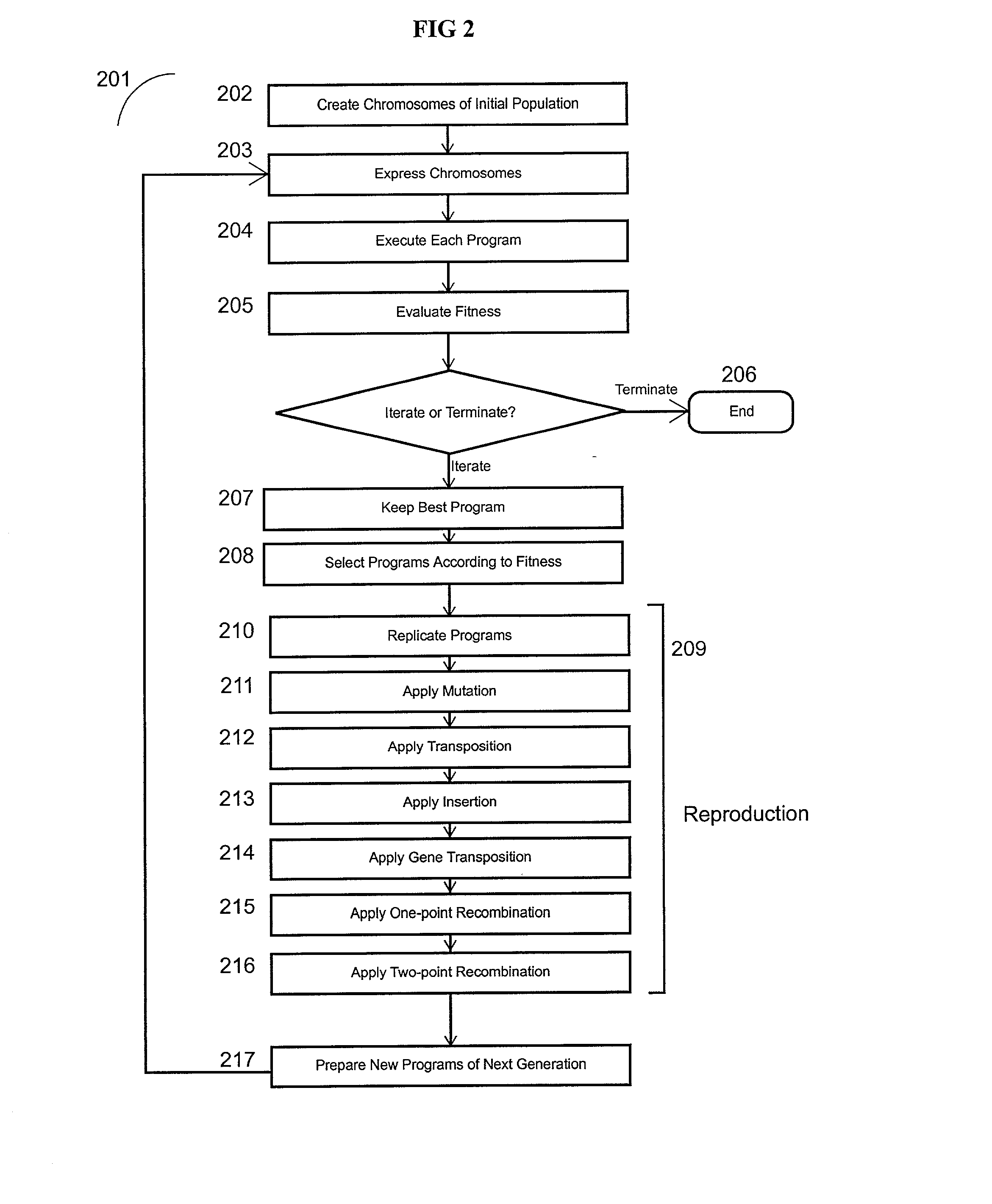Linear and non-linear genetic algorithms for solving problems such as optimization, function finding, planning and logic synthesis
a genetic algorithm and non-linear technology, applied in the field of genetic algorithms and genetic programming, can solve the problems of difficult application of this technique to more sophisticated problems, extremely complex and cumbersome to solve relatively simple tasks, and very simple life of the rna based li
- Summary
- Abstract
- Description
- Claims
- Application Information
AI Technical Summary
Problems solved by technology
Method used
Image
Examples
Embodiment Construction
[0041] The non-linear entities created by genetic programming are diagram representations of LISP S-expressions. FIG. 1 shows a conventional mathematical expression 101; the correspondent LISP S-expression 102; the respective tree diagram representation 103; and its representation in a chromosome (coding region 104) of the present invention. The symbol `Q` 105 in the coding region 104 of a chromosome represents the square root function.
[0042] Genetic programming creates initial populations of parse trees like the one shown in FIG. 1 (103), and these are the entities which are reproduced, recombined, permuted or, rarely, mutated (the genetic operators used by genetic programming). Nevertheless, these genetic manipulations are extremely complicated and problematic in this system, as the substitution of one argument by a function or vice versa, or the substitution of a function of two arguments by a function of one argument, like, for instance, the substitution of `*` by `sqrt` in FIG....
PUM
| Property | Measurement | Unit |
|---|---|---|
| length | aaaaa | aaaaa |
| sizes | aaaaa | aaaaa |
| catalytic activity | aaaaa | aaaaa |
Abstract
Description
Claims
Application Information
 Login to View More
Login to View More - R&D
- Intellectual Property
- Life Sciences
- Materials
- Tech Scout
- Unparalleled Data Quality
- Higher Quality Content
- 60% Fewer Hallucinations
Browse by: Latest US Patents, China's latest patents, Technical Efficacy Thesaurus, Application Domain, Technology Topic, Popular Technical Reports.
© 2025 PatSnap. All rights reserved.Legal|Privacy policy|Modern Slavery Act Transparency Statement|Sitemap|About US| Contact US: help@patsnap.com



